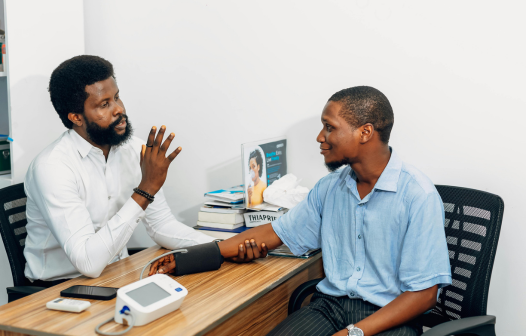MANSA (Multimodal African Neural Systems Architecture) is the first large-scale foundation model built to understand speech, text, and vision in African languages — bringing inclusive, culturally-aware AI that communicates through voice, story, and imagery.

.png)
MANSA processes speech, text, and images together — enabling AI that can listen, read, and see the world as people do.
.png)
Built from the ground up for Africa’s linguistic diversity, MANSA captures tonal variation, click consonants, and complex word structures while grounding meaning in local cultural and visual contexts.

.png)
As a foundation model, MANSA serves as a versatile platform that can be fine-tuned for countless applications — from healthcare and education to agriculture, e-commerce, and cultural preservation.
.png)
MANSA is built through collaboration with African researchers, developers, and institutions, ensuring that innovation remains rooted in local knowledge and ownership. Its open design empowers communities to shape, adapt, and benefit from AI that truly represents them.
Imagine a nurse in a rural clinic using a voice assistant that understands her local language. With MANSA, medical professionals can explain diagnoses in Yoruba, translate health information into Swahili, or deliver voice-based consultations in Hausa; all powered by AI that understands their context. This bridges critical gaps in healthcare delivery, especially for non-literate populations.


MANSA brings learning to life through multimodal education tools that blend voice, visuals, and storytelling. Students can explore mathematics in Kiswahili, history through Amharic narratives, or science lessons in Igbo — all within digital environments that reflect their linguistic and cultural identities.
Voice-driven commerce platforms can now serve entrepreneurs and farmers who may not read or write English or French. With MANSA, they can buy, sell, and access banking services in their native languages, receive personalized market updates, and engage in e-commerce through natural conversation.

From oral histories to traditional songs, MANSA provides a digital bridge for preserving and sharing Africa’s cultural heritage. Communities can record, transcribe, and translate stories in their native tongues — ensuring that centuries of wisdom and creativity are accessible to future generations.


In Africa, one in three adults cannot read — yet nearly all can speak and share meaning through rich oral and visual traditions.
Still, leading AI systems like GPT-4V and Gemini Vision support fewer than 50 of the continent’s 2,000+ languages, leaving over 1.5 billion people digitally excluded.
Voice assistants such as Alexa, Siri, and Google Assistant support none. Without inclusive AI, millions will remain cut off from digital access in healthcare, education, commerce, and culture.
MANSA changes that.
African languages are structurally and phonetically unique. MANSA is designed to handle:
- Tonal variation crucial to meaning in many languages.
- Click consonants found in Khoisan languages.
- Complex morphology where single words can express entire sentences.
- Cultural visual grounding: understanding how imagery, context, and symbols carry meaning.
By integrating these features into a unified multimodal system, MANSA goes beyond translation — it understands the African way of communicating.


MANSA is more than a model: it’s a movement toward AI that listens, speaks, and sees Africa.
It challenges the one-size-fits-all paradigm of global AI and demonstrates that inclusion isn’t just ethical, it’s technically superior.
By bridging the multimodal AI gap for African languages, MANSA will empower over 1.5 billion people, transforming artificial intelligence from a tool of exclusion into an engine of opportunity, dignity, and cultural pride.
The future of AI should speak every language — MANSA makes sure Africa’s voices are heard.
Unlock the full potential of your data with powerful AI. From custom model training to translation and chatbots, we turn your data into scalable solutions. Let us handle the complexity while you focus on innovation and growth.
Ready to get started?
